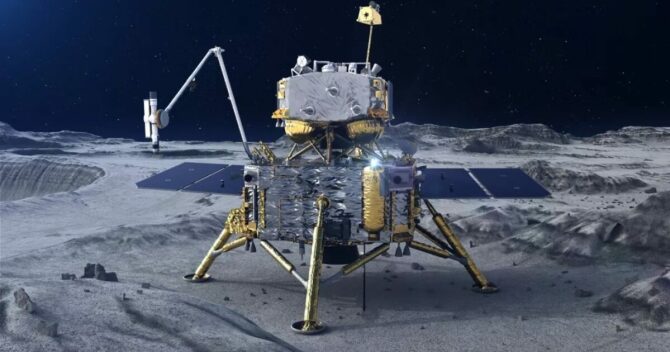This is an upgrade from Chang’e-5, which was launched in 2020 and brought back samples from the lunar surface facing Earth.
After decades of indifference, humanity is once again aiming for the Moon. The National Aeronautics and Space Administration (NASA) has expressed their desire to bring humans back to the surface of the moon within the next few years, and numerous nations have increased their efforts to land robotic explorers, with disappointingly limited success. One of the most notable achievements of China’s Chang’e missions has been the return of the first samples of lunar soil in decades, which was brought back by Chang’e-5. Now, the China National Space Administration (CNSA) has announced that the follow-up Chang’e-6 has arrived at the launch site for the purpose of undergoing final testing before it departs to collect samples from the opposite side of the Moon.
It is possible that we did not fully comprehend the significance of the event that occurred in 2020 when Chang’e-5 successfully reached the surface of the moon. Over the course of the subsequent years, we have witnessed both public and private Moon landers collide with the satellite that orbits the Earth. These include the Russian Luna-25 and the American Peregrine lander that was manufactured by Astrobotic. After successfully collecting 1.7 kg of dust from the Moon, Chang’e-5 was able to successfully send it back to Earth. On the opposite side of the Moon, which has only been visited a few times and from which we do not have any samples, Chang’e-6 will carry out an operation that is analogous to the one described above.
During the time when Chang’e-6 is being put through its final tests at the Wenchang Satellite Launch Center, the Chinese National Space Administration (CNSA) will simultaneously be working toward the launch of Queqiao-2 satellite. In order for Chang’e-6 to be successful, this relay satellite will be absolutely necessary. The sixth iteration of Chang’e will have more in common with Chang’e-4, which explored the far side of the moon in 2019. This is despite the fact that Chang’e-5 was able to interact directly with Earth. Due to the fact that the far side of the Moon is never facing Earth because of tidal locking, the relay satellite will be required in order to keep communication operational. Within the next few months, it is anticipated that Queqiao-2 will be released into space on a Long March 8 rocket.

It is China’s goal that Chang’e-6 would reach its destination in the first part of the year 2024. Its objective is to reach the Apollo crater, which is located on the far side of the Moon in the southern hemisphere. This edifice, which is also referred to as the Apollo Basin, is a remnant of an ancient impact that has been rebuilt by lava flows and other impacts after it was first created.
The Chang’e-6 will utilize the same technology that was responsible for the success of the Chang’e-5. In point of fact, Chang’e-6 was constructed as a backup lander for the mission that came before it. Following its arrival in Apollo Crater, the lander will make an effort to collect as much as 2 kilos (4.4 pounds) of lunar regolith. The sample will be transported into orbit by an ascent vehicle, which will then meet up with the service module. The service module will then release a return module, which will then send the sample back to Earth. Additionally, the lander is equipped with a number of multinational research payloads, such as a radiation detector built in France and a laser reflector manufactured in Italy.
Despite the fact that China has not yet decided on a specific launch date for Chang’e-6, the country is aiming for the first half of 2024. It is anticipated that this will bring China one step closer to establishing the International Lunar Research Station (ILRS), which is currently in the planning stages. Several countries, including Russia, Venezuela, Pakistan, and others, are in favor of establishing this lunar base, which may be put into operation in the 2030s.

